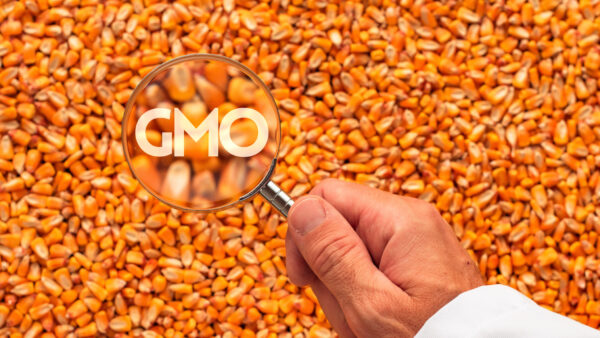The Seeds Canada Semi-Annual Meeting shone a light on the one major quality members say Canada’s seed regulatory system must possess.
Seeds Canada members got a first glimpse into the Seed Regulatory Modernization (SRM) process in November when the organization held its first in-person Semi-Annual Meeting in Ottawa, Ont.
Seeds Canada presented its official position on numerous recommendations of the first three SRM task teams, which recently completed their work and have put their recommendations forward to the Canadian Food Inspection Agency (CFIA) for consideration in modernizing Canada’s seed system.
“At this point, we’re only allowed to have those discussions within the members room, but are pretty excited that those reports are starting to come out. So we’re starting to be able to share some of those findings and how they align with our principles with our members,” said Seed Canada President Ellen Sparry.
“We’re also hopeful that the Canadian Food Inspection Agency is going to be able to release those in a more public way in the new year. I think it’ll be exciting for everyone to understand what’s in them and what the process is going to be.”
Nearly two years after the formation of Seeds Canada, the semi-annual meeting was a chance for members to catch up and reflect on the past four months since the annual meeting was held in July in Winnipeg, Man.
Seeds Canada unveiled a number of new initiatives at the semi-annual meeting, including the launch of a new members portal.
But, as usual, it was the policy discussion that members and staff were particularly excited about.
Topics this year included the Independent Standards Setting Body (ISSB Seed Value Chain) proposal, first unveiled in July at the annual meeting in Winnipeg, and SRM in general. For a relatively new organization that hasn’t quite turned two yet (Seeds Canada marks its second anniversary on Feb. 1, 2023), the number of portfolios it has in front of it is significant.
“The biggest focus has been on SRM and not just looking at the more minor changes we can make to the Seeds Regulations, but figuring out how we set up a system that is future-proof and allows us to have continuous improvement in our regulatory system so that we don’t have to keep doing these sorts of large-scale project-type reviews on a regular basis,” said Lauren Comin, Seeds Canada regulatory affairs manager.
The concept of the ISSB Seed Value Chain is to bring together stakeholders across the value chain, to act as an advisory body to ensure that Canada’s seed sector has a continuous dialogue at all times to ensure those incremental regulatory improvements can be made when they’re needed, Comin said.
The need for timely regulatory change was a big theme at the meeting. During a panel discussion featuring seed industry professionals, the fact that technological change is coming at the industry faster than ever was made clear — as was the need for industry to be able to respond to those changes quickly, something that will
only be made possible through smart regulation.
“I’ve spent 38 years in a sector focused on continuous improvement. That’s what genetic progress is about. Improvement is really another word for change,” said Dave Harwood, technical services manager for Corteva Agriscience based in Chatham, Ont.
“The size and sophistication of our industry and customers has changed so dramatically; we’ve seen a major transition to genetically modified crops and we now deal with an international trade framework that’s more complicated than ever. Average yields have skyrocketed. Having a nimble, agile regulatory system is paramount for these reasons and many more,” Harwood said.
Regulatory systems that enable continuous improvement are being implemented around the world, noted Brent Derkatch, pedigreed seed business unit director for Canterra Seeds in Manitoba — and it’s crucial Canada keeps pace if it is to compete on the global stage.
“As competing countries, every nation wants to put its seed products into the marketplace. Quite frankly, standing still is actually falling behind. Whatever that new technology might be, whatever the next international trade barrier that might pop up, we have to have a system that’s going to accommodate this continual evolution,” he said.
For Derkatch, the only way to craft a regulatory system that will benefit Canada long-term is to ensure the right discussions take place through the SRM process and the resulting regulatory framework allows the seed industry to be adaptable.
“Having a multi-stakeholder group setting standards for the industry would be an incredible tool for us. Having everyone around that table through an independent body would be powerful. I’ve often said if you’re not at the table, you quite possibly might be on the menu. That’s the situation we’re faced with in the world of today.”
Being able to compete in today’s world is a big concern of Seeds Canada policy director Lorne Hadley. In an interview for Germination‘s Giant Views series, Hadley said Canada has a long and proud history of reviewing its regulatory sphere. Still, it’s crucial to get the outcome of SRM right.
“I’ve been involved in several historical projects around seed modernization, like SRM. We had the National Forum on Seed and a seed sector review with the National Seed Sector Roundtable. We hope we go to a continuous improvement framework,” he said.
“We need a continuous improvement approach where the value chain, the seed sector and the government collaborate to have ongoing discussions and make continuous improvement regularly, not on a project basis. That’s where Seeds Canada is hoping we go.”
As far as actual regulatory change is concerned, he said Seeds Canada’s focus is on whether the regulations actually support members in serving their customers’ needs.
“Our members need to be able to do what is necessary to be innovative and bring innovative products to the customer. Regulation, if it impairs that, is not beneficial.”












